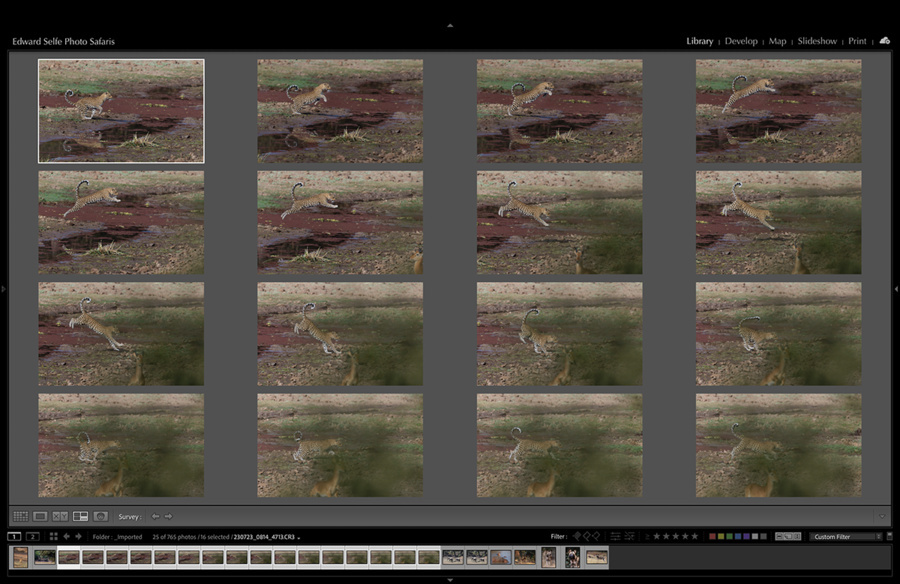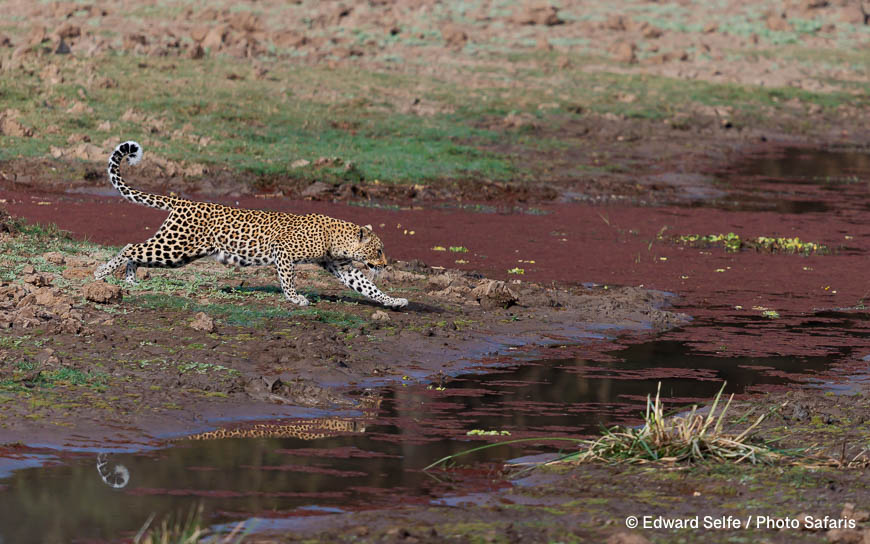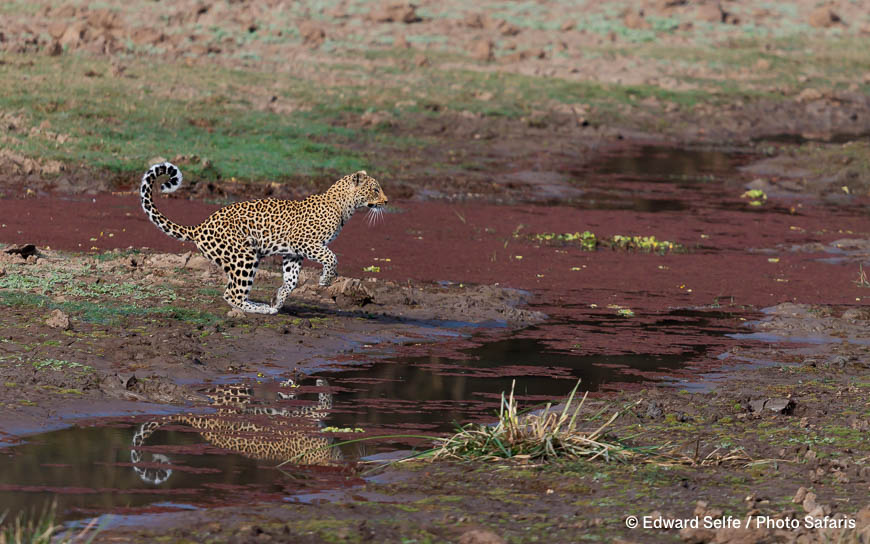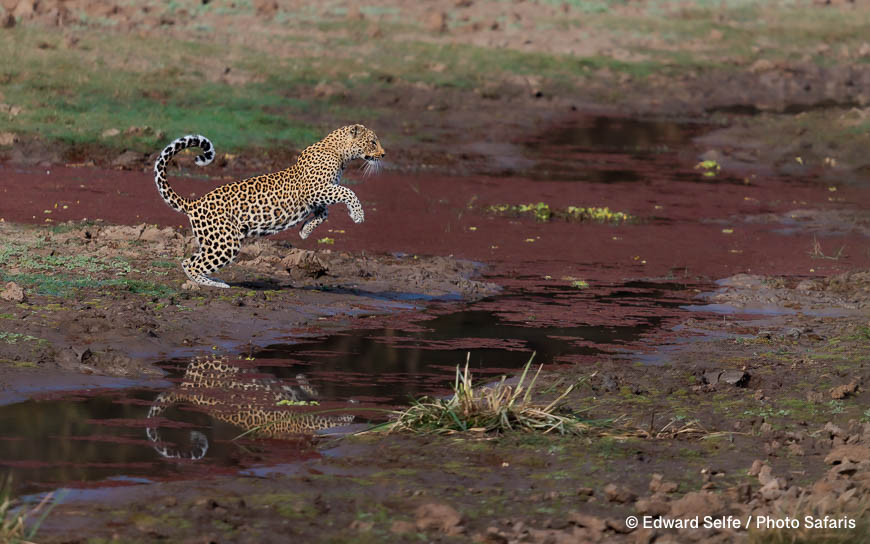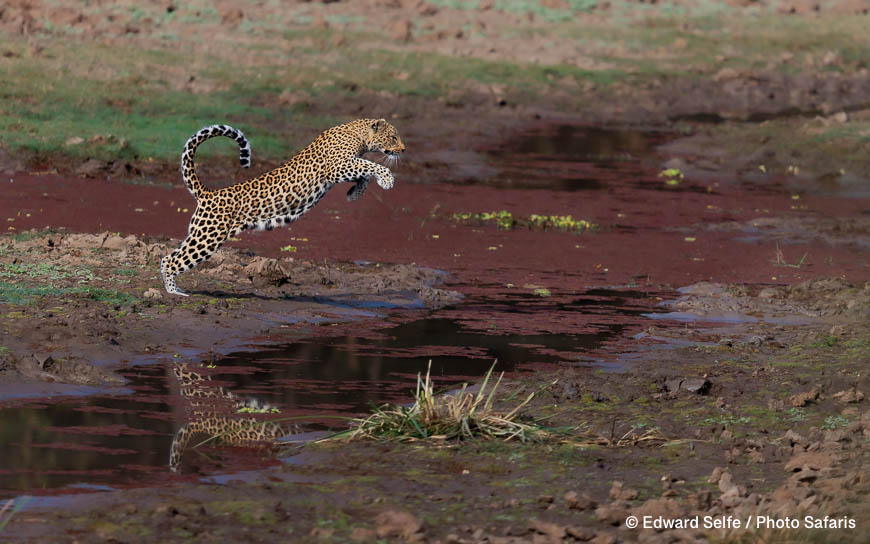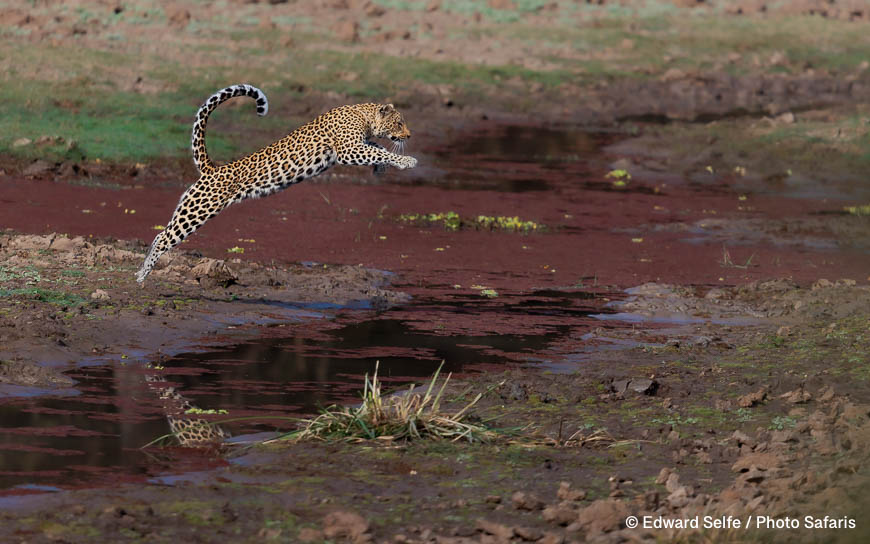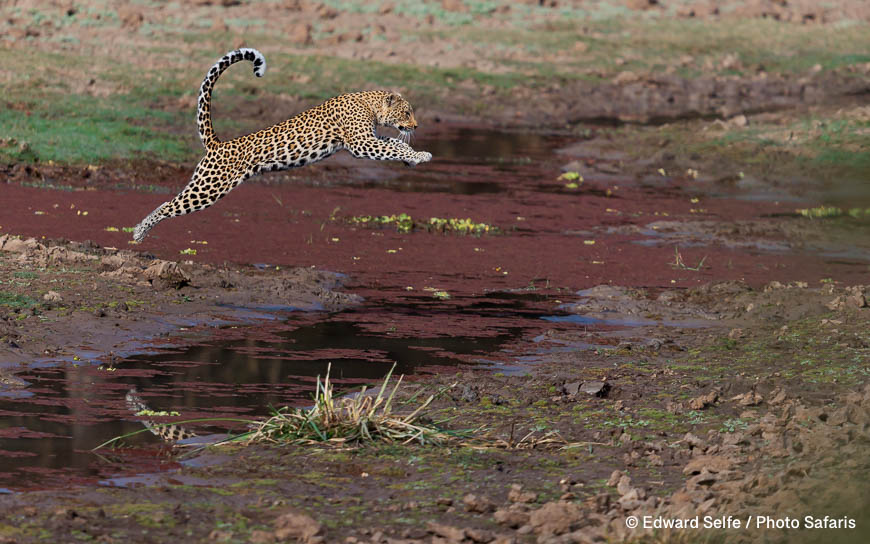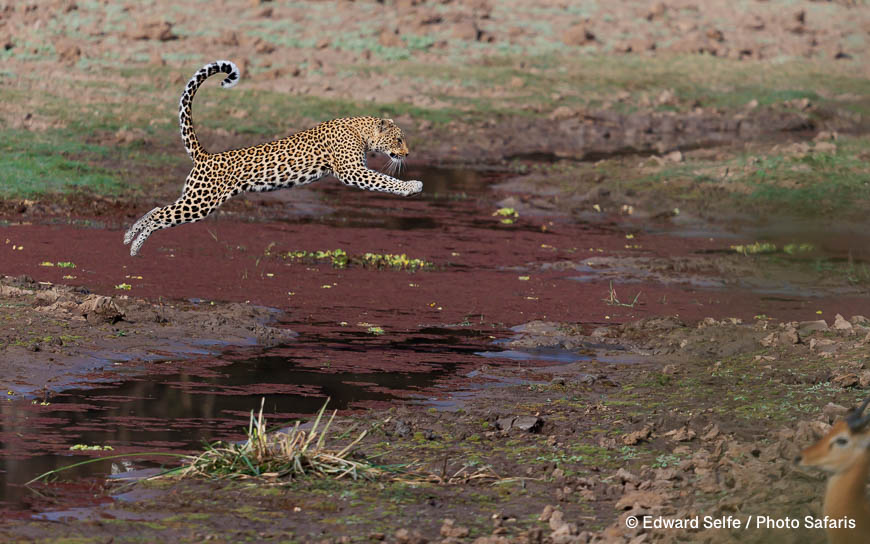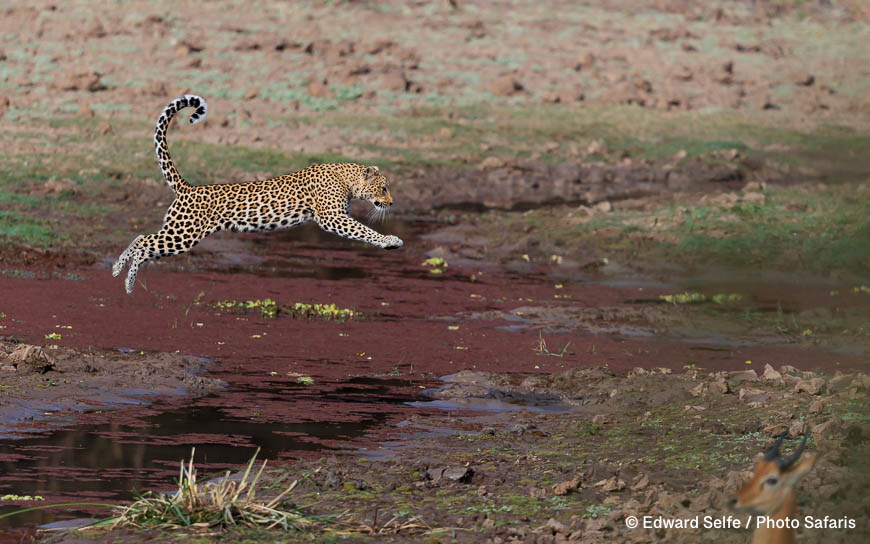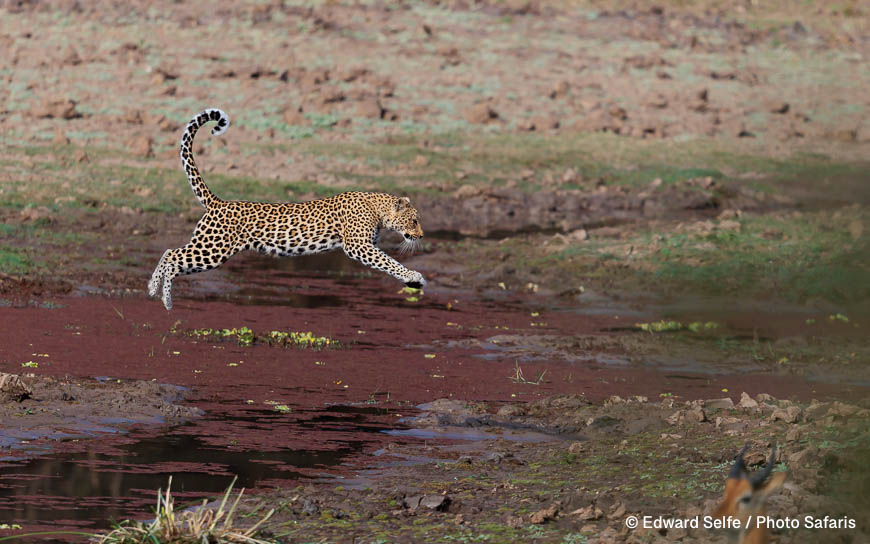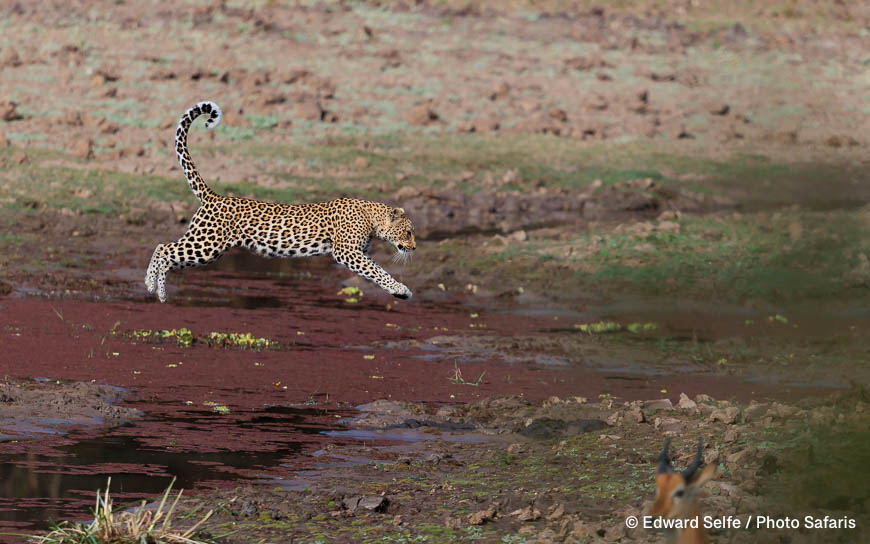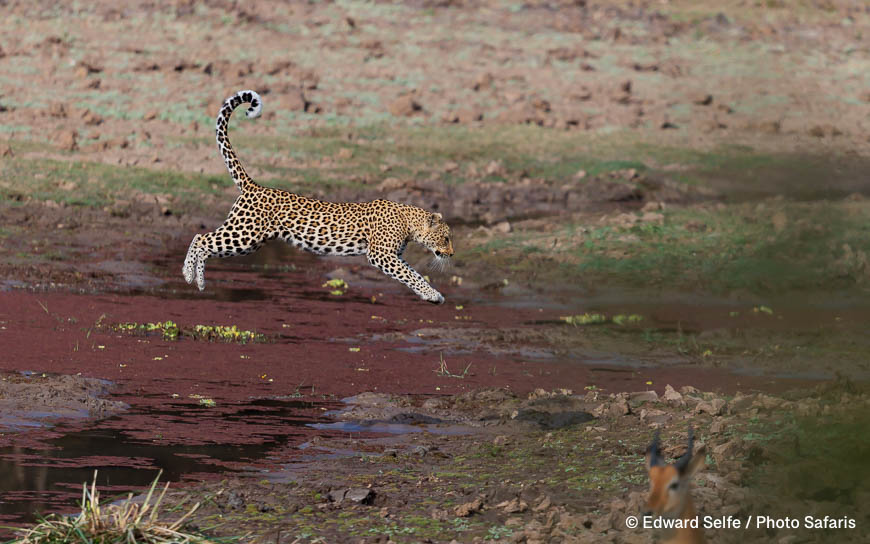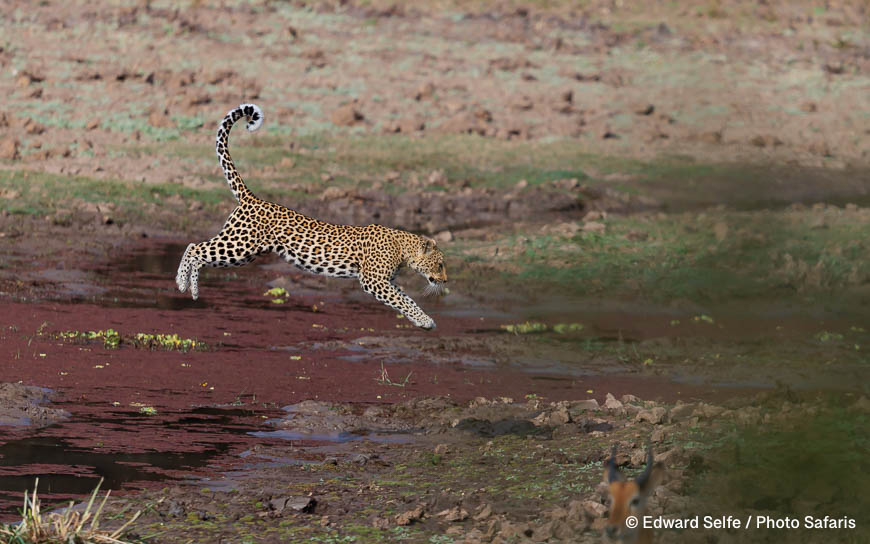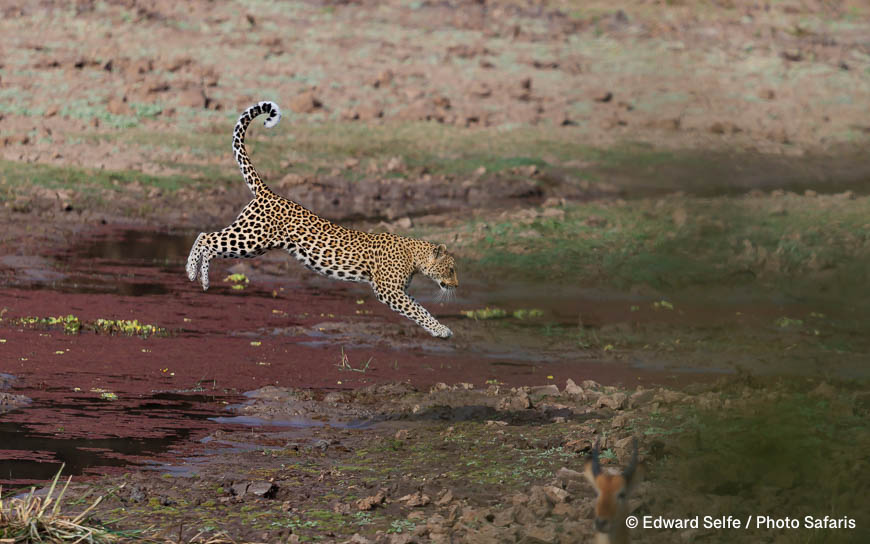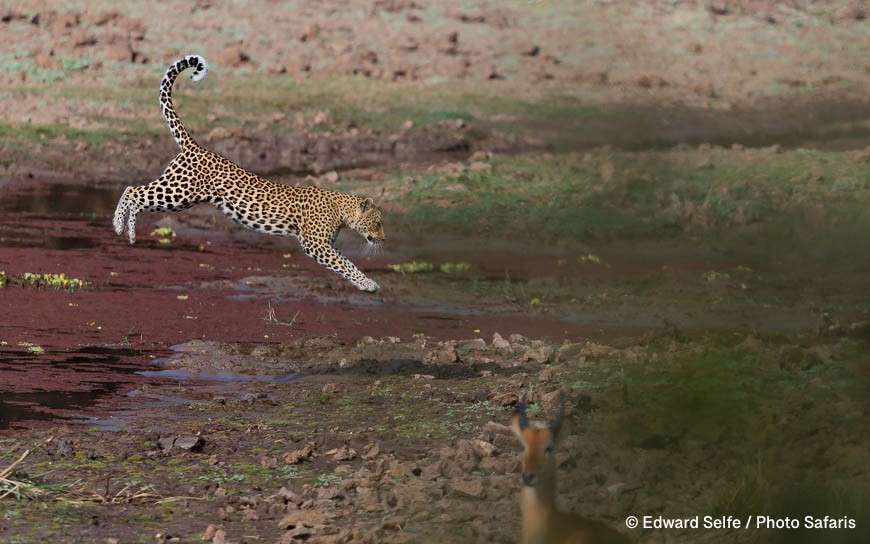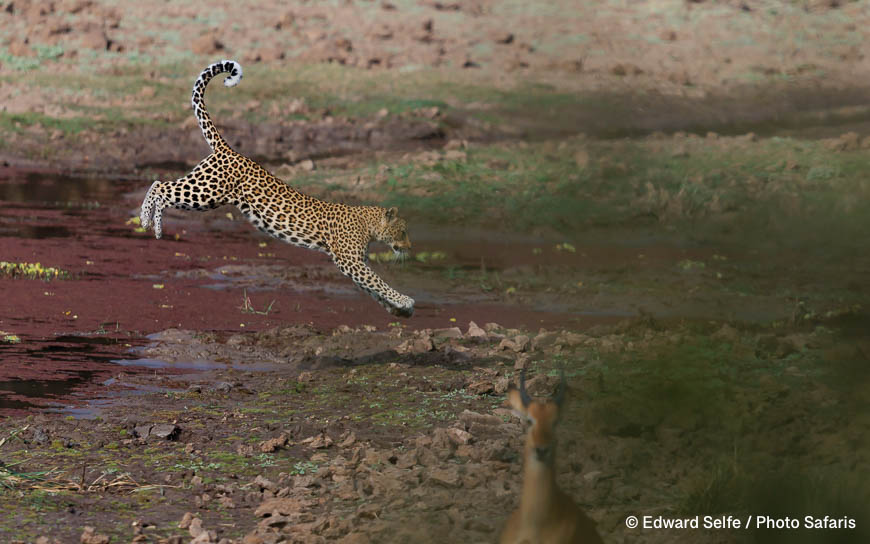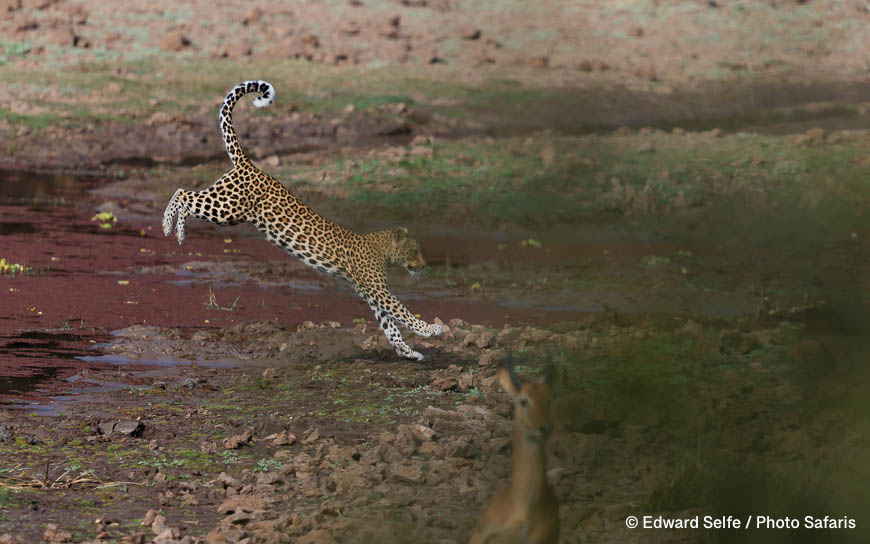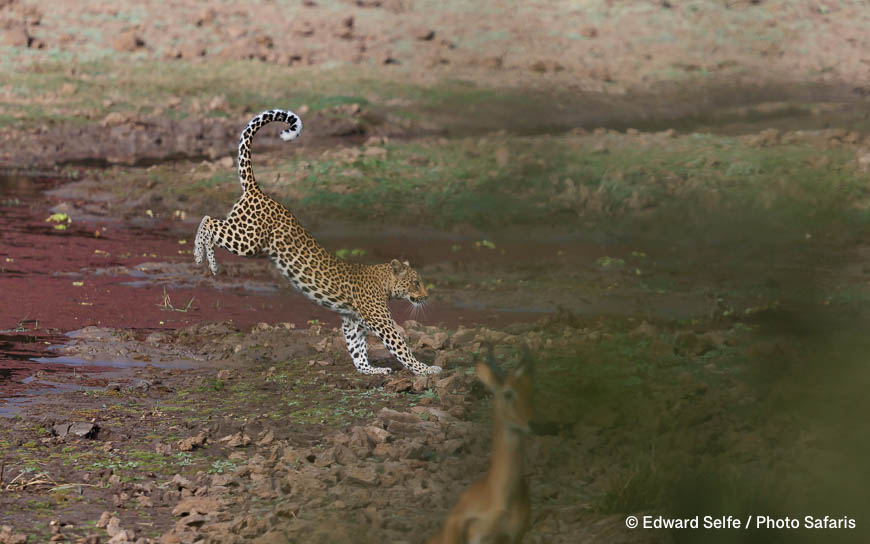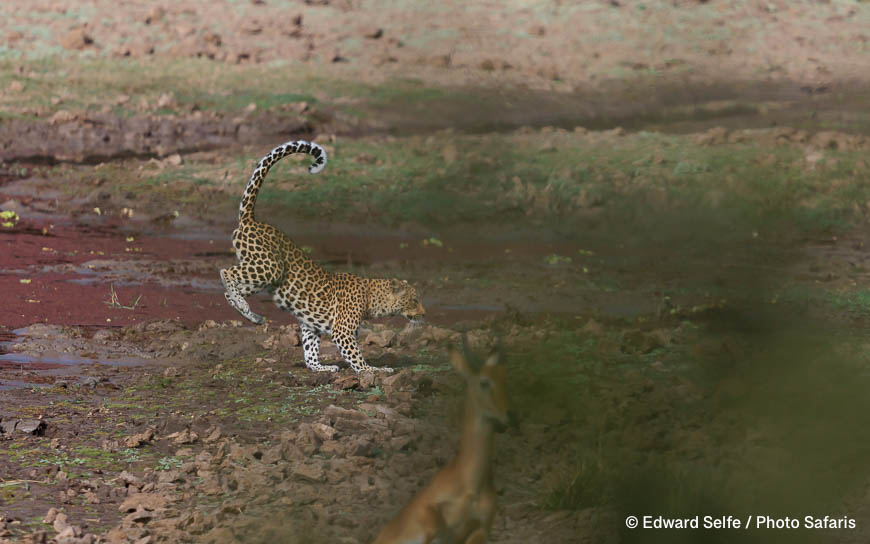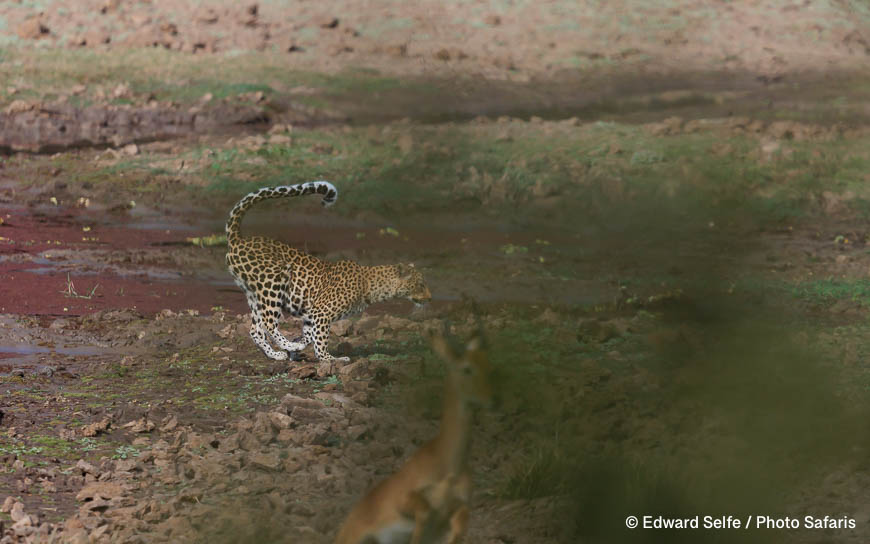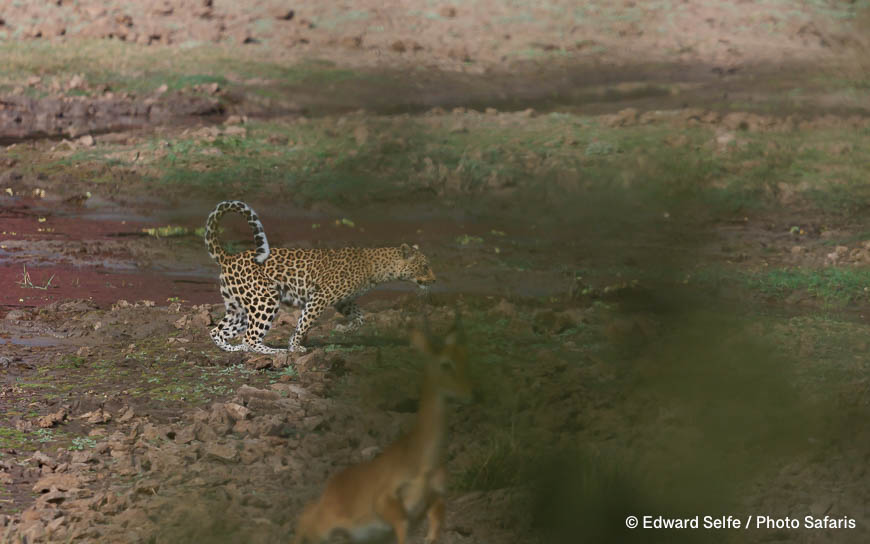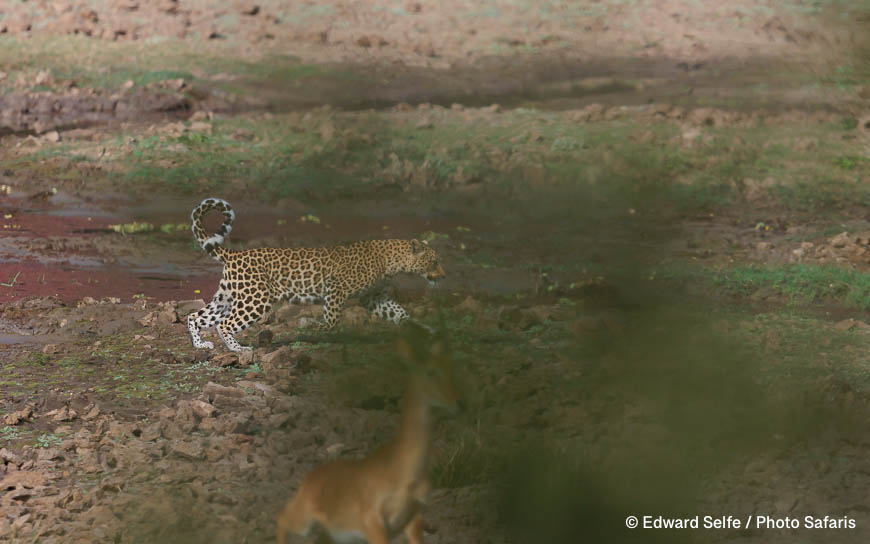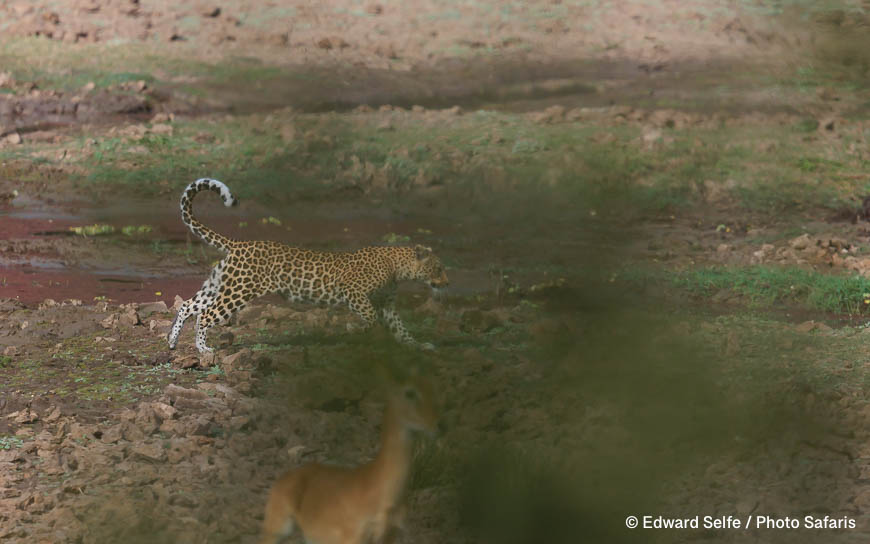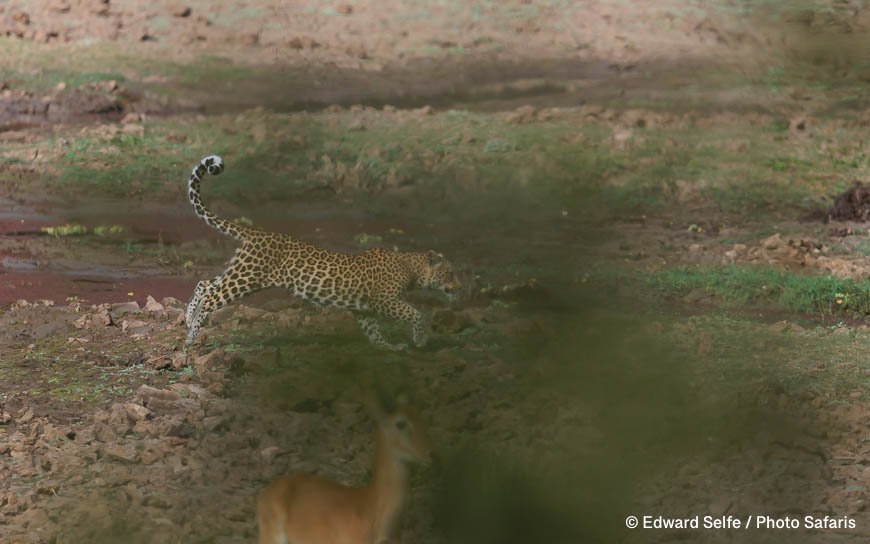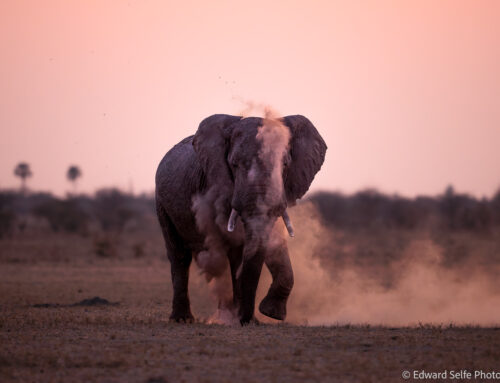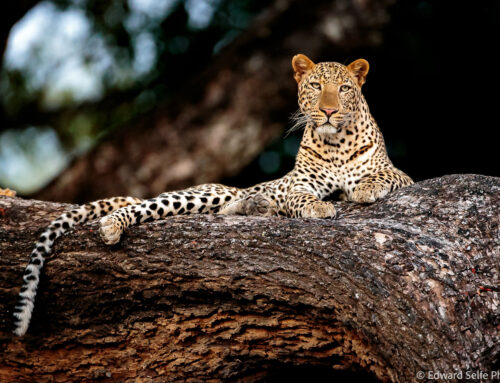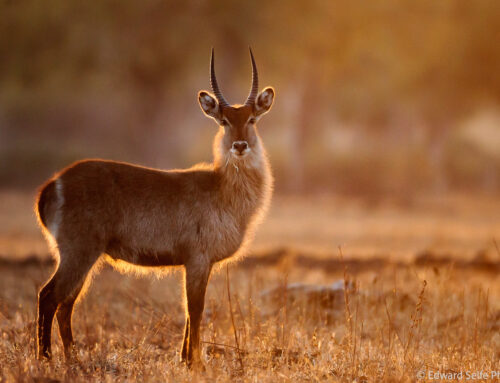Whenever I see the chance to photograph an animal jumping over (or going through!) a channel or river, I move quickly to get the best angle possible and prepare my guests for getting the shots. Generally, we try to be side-on (or slightly ‘ahead’ if possible) so that the animal is jumping perpendicular to us (or slightly towards us) and we can see the obstacle that they are jumping. In this case, being slightly higher is often better as the channel is clearer.
Camera settings are likely to be a wide aperture (so that the background is blurred), a fast shutter speed (like 1/2000sec to freeze the action) and a high ISO if needed to ensure this fast shutter speed. It’s then important to get the camera’s autofocus system to lock onto the subject before it jumps so that the AF is not tempted to shift to the background if the AF point drifts slightly off.
In the scenario below, we heard antelope alarm calls and arrived in the area in time to find the leopard moving away from us and towards the thickets. I could see that we would not get to her in time, so I looked at the topography and saw the flooded channel between her and the refuge of the treeline. I moved fast to get there ahead of her, and advised my guests on route of the settings discussed above.
Luckily for us, she dithered a bit at the edge of the water, retreating to get a better run up, and that gave us a bit more time. Below I discuss each image as part of the sequence (roughly 20 images taken at 20 frames per second) and how to choose the best one(s).

All the images were sharp and well exposed, which is a great starting point. The AF system on my Canon R5 had locked on and not let go, even when there were distractions such as the bush and an antelope in the bottom right corner of the frame. From this point, I could choose which images I preferred based on composition and position of the leopard.
Nice shot; good energy, part reflection in the water and clear intent on the leopard’s face. Probably a keeper.
The first jump image. I like it as there is a sense of the coiled spring of energy contained in those back legs. However, I find that it looks like the leopard doesn’t have to try to jump this gulley, and I’m hoping that there will be more ‘stretch’ in the later images.
As above.
This is the first of the ‘best images’. Front paws are reaching forward, head is clear, tail is coiled and there is a real sense that the leopard is ‘leaping’. A definite keeper.
Cracking image. Full stretch, head is distinct from the background, some reflection in the water. The leopard is also still on the way ‘up’ which I think makes for better images than when they are descending.
As above, but I think I prefer this image as there is more separation between the back legs and the ground, and all other factors are comparable.
Now it becomes a matter of personal preference. Here the leopard is more horizontal, rather than on the rise. I love this image and I would be very content if it was the only one, but I prefer the previous image as I like the energy included in the leopard’s rise to the top of of the jump.
For me, the energy starts to diminish from now on. Again, I would be more than happy if this was the only image that I had but, with the others to consider as well, I prefer the earlier images.
As above, and added to which, the head of the antelope in the lower-right starts to become a distraction as well.
From now on, the leopard is dropping and starting to go behind the screen of bush in the foreground (which was in the way of my shots, but not my guests who were on the left side of the vehicle) which is a further distraction. However, strangely, had the green screen of bushes been partly obscuring the leopard as is jumped upwards, I might not have minded so much….it would have looked like the leopard was emerging from them, rather than landing into them.






This is actually a very elegant and soft landing; when lions (and many antelope) jump channels, their landing is a lot heavier and it’s not an elegant moment for a photograph.


By now, the fleeing antelope is strongly obscuring the leopard and it wouldn’t be possible to crop it out, so these images are probably deleted. The screen of bushes is also confusing the AF system and the leopard is no longer totally sharp.


Thanks for looking through all these images. Do you agree with my choice? Or have anything to add? Please leave a comment below.
